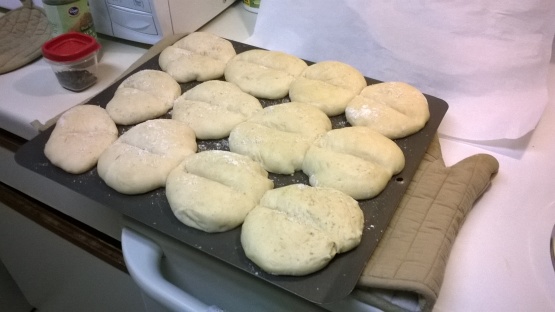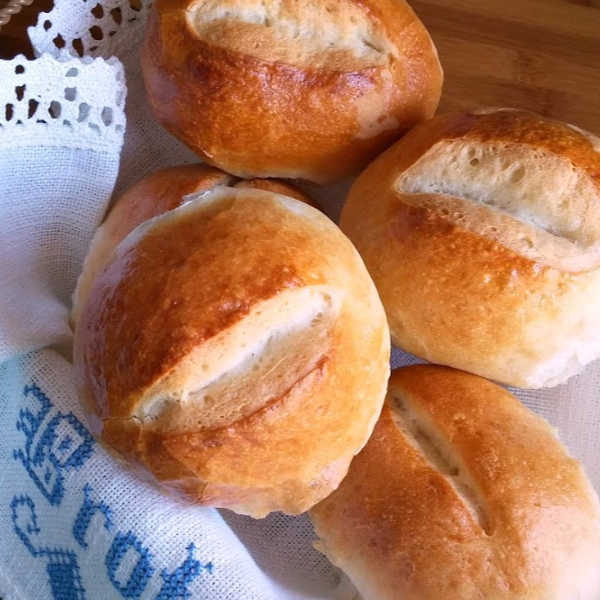Semmel
brötchen, brotchen, kipfen, rundstück, rundstuck, schrippe, weck, weckle, weckli
The Kaiser roll , also called a Vienna roll (Wiener Kaisersemmel), a hard roll or, if made by hand, also Handsemmel, is a typically round bread roll, originally from Austria. It is made from white flour, yeast, malt, water and salt, with the top side usually divided in a symmetric pattern of five segments, separated by curved superficial cuts radiating from the centre outward or folded in a series of overlapping lobes resembling a crown. The crisp Kaisersemmel is a traditional Austrian food officially approved by the Federal Ministry of Agriculture. Kaiser rolls have existed in a recognizable form since at least 1760. They are thought to have been named to honor Emperor (Kaiser) Franz Joseph I of Austria (born 1830, reigned 1848–1916). There is also the theory that the name stems at least in part from a baker family called Kayzer in Opatów in Galicia which had been occupied by the Austrian monarchy in the First Partition of Poland. In the 18th century a law fixed retail prices of Semmeln (bread rolls) in the Habsburg monarchy. Allegedly, the name Kaisersemmel came into general use after the bakers' guild sent a delegation in 1789 to Emperor Joseph II (b. 1741, r. 1765–1790) and persuaded him to deregulate the price of bread rolls.[citation needed]
Source: Wikipedia


:max_bytes(150000):strip_icc()/SES-german-hard-rolls-brotchen-recipe-1447218-ed9171c547504baa81ee372db7081330.jpg)

:max_bytes(150000):strip_icc()/9091746-german-brotchen-rolls-sk8mom-4x3-1-c472b122d53e46259e67741345a81e16.jpg)